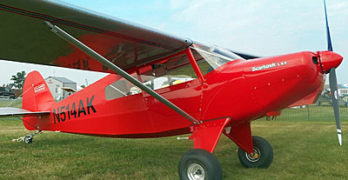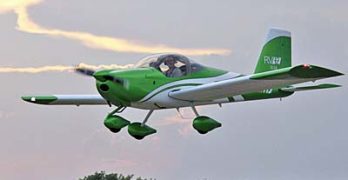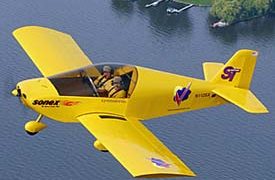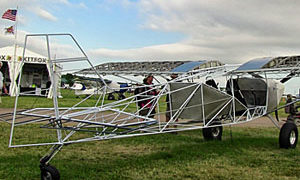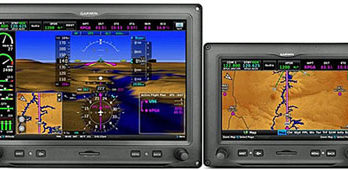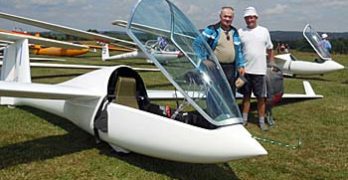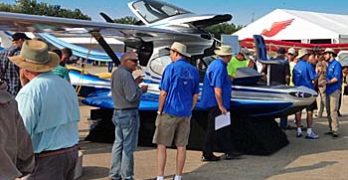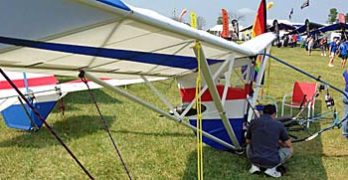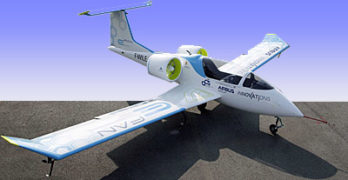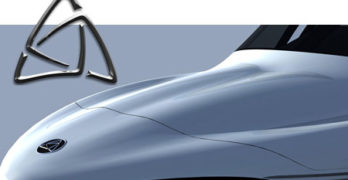Are you lusting after a Cub lookalike but can’t afford the steep price tags these popular flying machines carry? How about something much more affordable? A taildragger called Bearhawk has picked up accolades from AirVenture judges and owners appear very loyal. Sometimes those of us close to factory built Light-Sport Aircraft tend to forget about the homebuilt community. However, more pilots exercising the privileges of Sport Pilot are flying kit-built airplanes than ready-to-fly models, a trend that is likely to continue because a kit represents a lower cost option and one where the owner can more easily do all repair work. Let me clarify, though. Bearhawk is Sport Pilot eligible (using a term my longtime EAA friend, Ron Wagner, coined); it is technically not a Light-Sport. Bearhawk LSA made its debut at AirVenture two years ago as a prototype constructed by its designer, Bob Barrows. Recently a customer flew the first completed kit.
Search Results for : Flight Design
Not finding exactly what you expected? Try our advanced search option.
Select a manufacturer to go straight to all our content about that manufacturer.
Select an aircraft model to go straight to all our content about that model.
Van’s Aircraft Authorizes US Aviation of Texas
Van’s Aircraft has been creating highly successful designs for decades; more than 8,750 RV kits have been completed and are flying. Over 20,000 kits have been sold, cementing this Oregon company as the most successful kit aircraft company in history. In the last couple years, Van’s has enlisted Synergy Air to fully build and deliver their RV-12 Light-Sport Entry. Before the ready-to-fly project began Van’s had delivered more than 250 kit versions; the fleet of both kit and factory built RV-12s keeps growing. When that happens, many buyers — especially those who elected to purchase a factory-built ’12 — need quality places to obtain services for their airplane. Recently a Texas aviation powerhouse, US Aviation and their US Sport Planes division, was approved as a Factory Authorized service center for the RV-12. Company executive Scott Severen, a longtime recreational aircraft enthusiast and businessman, has been very successful at securing similar approvals from many of the top LSA manufacturers.
Sonex Roars, Purrs, & Glides; Factory-Built Van’s
Two key members of AKIA stopped by the LSA Mall at the new & improved Paradise City last week. AKIA? The Aircraft Kit Industry Association is a new group formed in July last year seeking cooperation between kit aircraft builders. Leaders include Van’s Aircraft and Sonex. Both have been making Light-Sport models, or what more correctly might be called “Sport Pilot eligible” or “Light-Sport-compliant aircraft.” Experimental Amateur Built (EAB) aircraft are technically not LSA even if they meet all parameters. Sonex and Van’s are upstanding producers of very popular aircraft and they have their eyes clearly on the light aircraft sector that is showing great resilience in a perpetually sluggish economy. Each company has too much info to fully cover here but a birds-eye view may encourage you to seek more.
Sonex Aircraft is based in Oshkosh, Wisconsin, right across the field from EAA’s headquarters. The company is so active on so many fronts that I will only provide a general view.
Post-Oshkosh 2013 Quick Review
At the big show EAA likes to call the Summer Celebration of Flight, we rove the grounds seeking new airplanes, new engines or propulsion systems, new panel gear, updated models and more. In this very fast tour, we’ll zoom around AirVenture for a glance at some airplanes and components that caught our attention. In subsequent posts we’ll delve a bit more deeply into certain ideas we thought were novel. All photos accompanying this article are courtesy of Light Sport and Ultralight Flyer, producer of the 300+ videos you can find on this website.
Rans showed off their new S-20 Raven. Those who thought designer and company boss Randy Schlitter got stuck on S-19 were wrong (it’s never wise to think he’s done designing). His new Raven combines elements of the S-6 and S-7, namely the side-by-side seating of the S-6, with the welded spaceframe and superwide door of the S-7.
Final Newsbits Before AirVenture 2014 Starts
Garmin has a new smaller version of their very impressive G3X Touch. I examined this at Sun ‘n Fun when it was debuted in the 10-inch screen and came away highly impressed after two reviews on videos. For a billion-dollar company Garmin remains passionately inventive and surprisingly nimble. They keep the heat on now introducing a 7-inch G3X Touch display, described as “a high-resolution infrared touchscreen display designed for experimental amateur-built and Light-Sport Aircraft to compliments their existing 10.6-inch G3X Touch system.” Pilots and homebuilders concerned about instrument panel height and width constraints should be pleased to have the 7-inch option. All G3X Touch displays support Connext that allows wireless flight plan transfer between the company’s Garmin Pilot app on an iOS or select Android mobile device. “A well-equipped 7-inch G3X Touch system, which includes SVX, video input, a built-in WAAS GPS receiver, ADAHRS, magnetometer, OAT probe, interactive mapping and more, starts at $4,599,” said Garmin officials.
Carbon Composite Part 103 Glider / Motorglider
For your weekend enjoyment — and because I am a soaring enthusiast … plus I was sent some interesting photos — consider this slick Part 103 glider, or motorglider (photo). Radek Hucik sent photos of the aircraft performing at a Czech soaring content, where it placed 12th out of 34 competitors. Considering most of the others appear to be conventional sailplanes, one that meets Part 103 at much less weight did well. A high end sailplane can hit or exceed a 50:1 glide angle. This is an amazing performance mark, which translates to flying nearly ten miles from only 1,000 feet of altitude. The XS-12 Saggita manages 35:1 (more specs below) and that is a noteworthy achievement for such a light aircraft. Radek wrote, “[This is] a powered glider that my colleagues and I have developed over the past 20 months. The glider is designed so that it meets Federal Aviation Regulations Part 103 [for] Ultralight Vehicles.
Post-AirVenture 2014 News Review
Summer’s big show is over and most aviation business folks are back home having that love/hate affair with email that piled up while we worked the event. On whole, the success story is strong. Airplanes sold, crowds were good, accidents were few, and the weather was not smoking hot like it has been in years past (though brief rain showers kept folks dashing for cover on occasion). EAA says attendance was up from last year, that the numbers of airplanes was higher, and that campgrounds reached capacity by midweek. EAA’s special 10th Anniversary of Sport Pilot/Light-Sport Aircraft Exhibit drew well all week with 17 aircraft representing all sectors within the SP/LSA space. Visitors could hardly miss the wonderfully central space AirVenture planners offered for this one-year display. With the front corners presenting a bright green Van’s RV-12 plus the freshly debuted MVP seaplane attendees were practically compelled to wander the space and see all the flying machines.
Affordable EMG … Electric Motor Glider
Update 8/8/14 — See our video interview about EMG at the end. An unpowered EMG — or Electric Motor Glider — from Adventure Aircraft has already taken 400 flights; it has also been fitted with a small electric motor … complete with carbon folding prop. A new Experimental Amateur Built (EAB) two seater is now taking shape and both variations were on exhibit at AirVenture 2014 in the newly named Fun Fly Zone (formerly Ultralight Area). EMG’s spark is provided by the dynamic duo of Brian and Carol Carpenter of Rainbow Aviation, well known for their LSA maintenance courses including the LSR-M (Light-Sport Repairman Maintenance) credential that has prepared many mechanics to do serious work on the growing fleet of LSA. EMG builder Adventure Aircraft is a subsidiary of Rainbow. Evidently this hard working pair aren’t fond of wasting many hours with something so mundane as sleep because the project is unfolding quite swiftly.
Airbus Goes Electric and Small (with Big Ideas)
As we all get packing for Oshkosh where we’ll see all manner of aircraft, one of the biggest manufacturers revealed one of the smallest airplanes at another airshow: Farnborough in England, an event dominated by military and airline producers. More surprisingly, Airbus announced at Farnborough that it would put into production their all-electric-powered E-Fan. Big aircraft, the buses of the sky, are good at moving people to their destination. However, they are very noisy and consume oceans of fuel leading to more pollution. Can this situation improve? Is it even reasonable to consider an electric-powered airliners? Some experts scoff at the idea but Airbus’ E-Fan made a powerful, if relatively quiet, statement.
Airbus’ E-fan made its first flight at a French airport near Bordeaux on March 11th this year. The project reportedly evolved from work with the tiniest airplane most AirVenture visitors have seen. Airbus used an electric-powered Cri-Cri as a test bed to develop their battery and energy management technology.
Versatile LSA Seaplane to Debut at AirVenture 2014
An entirely new Light-Sport seaplane will make its “global debut” at EAA AirVenture 2014 and this is one you’ll want to see up close and in detail. As with a number of other persons, I have been briefed on this new entry and, like the others, I signed a Non-Disclosure Agreement to keep the new project under wraps until company leaders were ready to reveal their new flying machine. At the coming summer celebration of flight in Oshkosh, Wisconsin, everyone will finally get to see what has excited many of those NDA signers. Airshow visitors will see a mockup, but if the full-size concept looks even remotely as good as it did in the computer presentation I was shown, be prepared to be blown away. This boat hull aircraft has features you’ve never even contemplated much less seen on any previous offering. You can guess some of what I’m writing about by their tagline for MVP, “The World’s Most Versatile Plane.” That’s a big claim as we already have many good seaplane designs and more will be following.
- « Previous Page
- 1
- …
- 86
- 87
- 88
- 89
- 90
- …
- 147
- Next Page »


